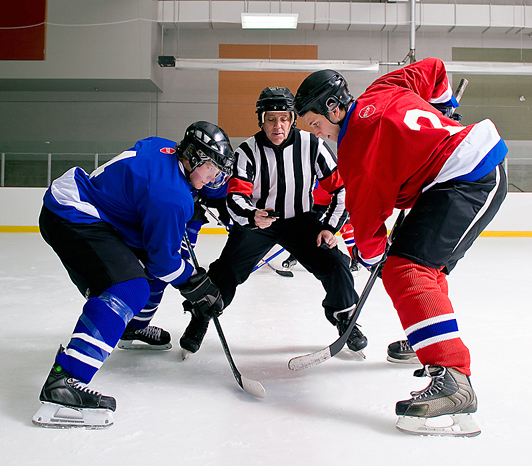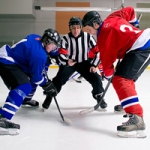The most common shoulder injuries in hockey include acromioclavicular (A-C joint) separation in the shoulder, clavicle (collarbone) fractures, and shoulder dislocations. Dr. John MacGillivray, Orthopedic Surgeon, discusses these three common hockey injuries and the treatments that can get you back on the ice.

A-C joint separations are commonly caused by getting checked into the boards, resulting in an injury to the ligaments that stabilize the A-C joint. Using Hockey shoulder pads can be a preventative measure, but not full proof. If checked with enough force, an A-C joint separation still may occur despite wearing pads. The majority of these injuries are treated non-operatively, including physical therapy, anti-inflammatory medications or sometimes corticosteroid injections. However, some of the more displaced, or misaligned joints may require surgery. One can return to play once pain has subsided.
Clavicle (collarbone) fractures are often caused by being checked into the boards. Treatment is based on several factors including the amount of displacement, shortening (when the two broken bone-ends overlap), and the number of fractures in the bone. Surgery is recommended if there is a fair amount of displacement, shortening of more than one inch, and if the fractures break the bone into more than 2 pieces. Treatment consists of wearing a sling for 4-6 weeks and return to play at 3-4 months.
Shoulder dislocation occurs when the shoulder ball pops out of the socket. When this occurs, the player usually needs to be taken to the emergency room to reposition the shoulder. A first time dislocation is usually treated with physical therapy to strengthen the shoulder. If more shoulder dislocations occur, then it may be warranted to perform arthroscopic shoulder stabilization surgery a minimally invasive procedure to repair shoulder injuries using small cameras and instruments that are fit through tiny incisions in order to view and repair the shoulder’s structure.
Courtesy: www.hss.edu














